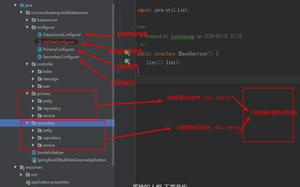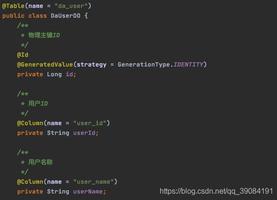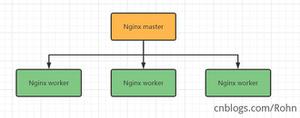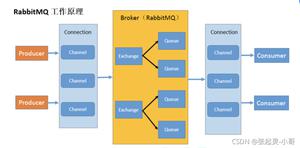MySQL实验内连接优化orderby+limit以及添加索引再次改进G

MySQL实验 内连接优化order by+limit 以及添加索引再次改进
在进行子查询优化双参数limit时我萌生了测试更加符合实际生产需要的ORDER BY + LIMIT的想法,或许我们也可以对ORDER BY + LIMIT 也进行适当优化
实验准备
使用MySQL官方的大数据库employees进行实验,导入该示例库见此
准备使用其中的employees表,先查看一下表结构和表内的记录数量
mysql> desc employees;+------------+---------------+------+-----+---------+-------+
| Field | Type | Null | Key | Default | Extra |
+------------+---------------+------+-----+---------+-------+
| emp_no | int(11) | NO | PRI | NULL | |
| birth_date | date | NO | | NULL | |
| first_name | varchar(14) | NO | | NULL | |
| last_name | varchar(16) | NO | | NULL | |
| gender | enum("M","F") | NO | | NULL | |
| hire_date | date | NO | | NULL | |
+------------+---------------+------+-----+---------+-------+
6 rows in set (0.00 sec)
mysql> select count(*) from employeed;ERROR 1146 (42S02): Table "employees.employeed" doesn"t exist
mysql> select count(*) from employees;
+----------+
| count(*) |
+----------+
| 300024 |
+----------+
1 row in set (0.05 sec)
我们可以看到,只有主键emp_no有索引
实验过程
MySQL5.7官网对Explain各项参数的解释
官网对ORDER BY机制的详解
explain参数5.7版本推荐参考博客
老版本explain推荐参考博客(即新版本默认explain extended)
关于explain参数的拓展链接
MySQL explain key值的解释
使用未优化order by + limit
mysql> select * from employees order by birth_date limit 200000,10;+--------+------------+------------+------------+--------+------------+
| emp_no | birth_date | first_name | last_name | gender | hire_date |
+--------+------------+------------+------------+--------+------------+
| 498507 | 1960-09-24 | Perla | Delgrange | M | 1989-12-08 |
| 494212 | 1960-09-25 | Susuma | Baranowski | M | 1989-05-15 |
| 496888 | 1960-09-25 | Rosalyn | Rebaine | M | 1985-11-27 |
| 497766 | 1960-09-25 | Matt | Atrawala | F | 1987-02-11 |
| 481404 | 1960-09-25 | Sanjeeva | Eterovic | F | 1986-06-05 |
| 483269 | 1960-09-25 | Mitchel | Pramanik | F | 1997-07-23 |
| 483270 | 1960-09-25 | Geoff | Gulik | F | 1993-11-25 |
| 59683 | 1960-09-25 | Supot | Millington | F | 1991-06-03 |
| 101264 | 1960-09-25 | Mansur | Atchley | F | 1990-05-22 |
| 92453 | 1960-09-25 | Khalid | Trystram | M | 1993-11-10 |
+--------+------------+------------+------------+--------+------------+
10 rows in set (0.20 sec)
mysql> explain select * from employees order by birth_date limit 200000,10;+----+-------------+-----------+------------+------+---------------+------+---------+------+--------+----------+----------------+
| id | select_type | table | partitions | type | possible_keys | key | key_len | ref | rows | filtered | Extra |
+----+-------------+-----------+------------+------+---------------+------+---------+------+--------+----------+----------------+
| 1 | SIMPLE | employees | NULL | ALL | NULL | NULL | NULL | NULL | 299468 | 100.00 | Using filesort |
+----+-------------+-----------+------------+------+---------------+------+---------+------+--------+----------+----------------+
1 row in set, 1 warning (0.00 sec)
我们可以看到,未优化时使用的是全表扫描,花费0.2s
内连接优化
优化思路:我们可以利用主键emp_no的索引树,在索引树上将符合order by birth_date limit 200000,10的元组(即,行)的主键找出来,再用内连接返回10行emp_no的所有信息。
(内连接只返回表中与连接条件相匹配的行,也就是说,select emp_no from employees order by birth_date limit 200000,10只会返回10个emp_no,那么内连接后,结果集中也只有10个emp_no对应的所有信息)
(另外这里的内连接时使用了emp_no,即,子查询中也有"覆盖索引"减少磁盘I/O的功劳)
mysql> select * from employees inner join (select emp_no from employees order by birth_date limit 200000,10) as temp_table using (emp_no);+--------+------------+------------+-----------+--------+------------+
| emp_no | birth_date | first_name | last_name | gender | hire_date |
+--------+------------+------------+-----------+--------+------------+
| 427365 | 1960-09-24 | Yuping | Sethi | M | 1990-06-21 |
| 424219 | 1960-09-25 | Woody | Bernini | M | 1989-03-10 |
| 469218 | 1960-09-25 | George | Plotkin | M | 1992-02-19 |
| 404121 | 1960-09-25 | Domenico | Birnbaum | M | 1993-08-01 |
| 404266 | 1960-09-25 | Quingbo | Jervis | F | 1985-03-15 |
| 409133 | 1960-09-25 | Nitsan | Kleiser | F | 1985-05-18 |
| 409558 | 1960-09-25 | Shunichi | Hofting | F | 1992-07-06 |
| 412045 | 1960-09-25 | Kristin | Bolotov | F | 1985-06-28 |
| 481404 | 1960-09-25 | Sanjeeva | Eterovic | F | 1986-06-05 |
| 483269 | 1960-09-25 | Mitchel | Pramanik | F | 1997-07-23 |
+--------+------------+------------+-----------+--------+------------+
10 rows in set (0.10 sec)
mysql> explain select * from employees inner join (select emp_no from employees order by birth_date limit 100000,10) as table_temp using (emp_no);+----+-------------+------------+------------+--------+---------------+---------+---------+-------------------+--------+----------+----------------+
| id | select_type | table | partitions | type | possible_keys | key | key_len | ref | rows | filtered | Extra |
+----+-------------+------------+------------+--------+---------------+---------+---------+-------------------+--------+----------+----------------+
| 1 | PRIMARY | <derived2> | NULL | ALL | NULL | NULL | NULL | NULL | 100010 | 100.00 | NULL |
| 1 | PRIMARY | employees | NULL | eq_ref | PRIMARY | PRIMARY | 4 | table_temp.emp_no | 1 | 100.00 | NULL |
| 2 | DERIVED | employees | NULL | ALL | NULL | NULL | NULL | NULL | 299468 | 100.00 | Using filesort |
+----+-------------+------------+------------+--------+---------------+---------+---------+-------------------+--------+----------+----------------+
3 rows in set, 1 warning (0.00 sec)
可见效率提高了一倍,在explain中
第三行的select_type为DERIVED,是指这行是包含在from子句中的查询,我们可以看到,子句查询也没有使用索引
<derived2>是指,第一行的查询说明表示当前查询依赖 id=N 的查询,此处N=2,那我们先看第二行:第二行type为
eq_ref是指primary key 或 unique key 索引被连接(join)使用,,对于每个索引键的关联查询,返回匹配唯一行数据(有且只有1个)。在这里就是说在子查询查询到emp_no后,子查询中产生的临时表与employees表进行连接。(对于这里的explain的解释只包含了对explain各项参数的解释,但似乎没有办法直接验证优化思路,还望各位看官前辈指点)
为排序字段加上索引
既然我们在内连接中是通过排序字段birth_date后对emp_no进行查询,那么我们或许能再为排序字段加上索引以再次提高效率。
mysql> alter table employees add index birthdate_index (birth_date);Query OK, 0 rows affected (0.75 sec)
Records: 0 Duplicates: 0 Warnings: 0
mysql> desc employees;
+------------+---------------+------+-----+---------+-------+
| Field | Type | Null | Key | Default | Extra |
+------------+---------------+------+-----+---------+-------+
| emp_no | int(11) | NO | PRI | NULL | |
| birth_date | date | NO | MUL | NULL | |
| first_name | varchar(14) | NO | | NULL | |
| last_name | varchar(16) | NO | | NULL | |
| gender | enum("M","F") | NO | | NULL | |
| hire_date | date | NO | | NULL | |
+------------+---------------+------+-----+---------+-------+
6 rows in set (0.00 sec)
然后我们再次执行未优化和通过内连接优化的两条查询语句。
mysql> select * from employees order by birth_date limit 200000,10;+--------+------------+------------+------------+--------+------------+
| emp_no | birth_date | first_name | last_name | gender | hire_date |
+--------+------------+------------+------------+--------+------------+
| 498507 | 1960-09-24 | Perla | Delgrange | M | 1989-12-08 |
| 494212 | 1960-09-25 | Susuma | Baranowski | M | 1989-05-15 |
| 496888 | 1960-09-25 | Rosalyn | Rebaine | M | 1985-11-27 |
| 497766 | 1960-09-25 | Matt | Atrawala | F | 1987-02-11 |
| 481404 | 1960-09-25 | Sanjeeva | Eterovic | F | 1986-06-05 |
| 483269 | 1960-09-25 | Mitchel | Pramanik | F | 1997-07-23 |
| 483270 | 1960-09-25 | Geoff | Gulik | F | 1993-11-25 |
| 59683 | 1960-09-25 | Supot | Millington | F | 1991-06-03 |
| 101264 | 1960-09-25 | Mansur | Atchley | F | 1990-05-22 |
| 92453 | 1960-09-25 | Khalid | Trystram | M | 1993-11-10 |
+--------+------------+------------+------------+--------+------------+
10 rows in set (0.20 sec)
mysql> select * from employees inner join (select emp_no from employees order by birth_date limit 200000,10) as temp_table using (emp_no);+--------+------------+------------+------------+--------+------------+
| emp_no | birth_date | first_name | last_name | gender | hire_date |
+--------+------------+------------+------------+--------+------------+
| 498507 | 1960-09-24 | Perla | Delgrange | M | 1989-12-08 |
| 23102 | 1960-09-25 | Hsiangchu | Harbusch | M | 1986-03-14 |
| 29961 | 1960-09-25 | Susumu | Munoz | F | 1989-12-31 |
| 32061 | 1960-09-25 | Dipankar | Buescher | M | 1992-10-24 |
| 36216 | 1960-09-25 | Xianlong | Rassart | F | 1987-09-05 |
| 37058 | 1960-09-25 | Khue | Osgood | M | 1991-11-04 |
| 38365 | 1960-09-25 | Sariel | Ramsak | M | 1993-02-26 |
| 39901 | 1960-09-25 | Jianhui | Ushiama | M | 1985-12-03 |
| 59683 | 1960-09-25 | Supot | Millington | F | 1991-06-03 |
| 63784 | 1960-09-25 | Rosita | Zyda | M | 1988-08-12 |
+--------+------------+------------+------------+--------+------------+
10 rows in set (0.03 sec)
我们可以看到,普通查询语句并没有得到效率上的提升,但是内连接的查询效率得到了很大的提升,花费时间从原来的0.1s缩减为0.03秒,也就是说,再次优化后的内连接差不多可以应对百万(甚至千万级,因为实际生产中所使用的硬件设施肯定会远远好与我现在的基础班ECS)级别的数据了。
对于加上 birthdate_index索引后普通查询效率未提升的说明:
因为我们查询的是select *,即使emp_no和birth_date上有索引,在查询其他列信息的时候,我们依然需要回表。因此即使加上索引后,我们的普通查询依然使用的是全表扫描。
小结
经过试验证明,内连接对于order by+双参数limit有一定效果,在合适的内连接子查询下,增加相应的索引,能够使性能进一步提升。从0.2到0.1在到0.03,当缩减一个数量级时,那都是很大的突破。(完结撒花~)
最后的补充
EXPLAIN不会告诉你关于触发器、存储过程的信息或用户自定义函数对查询的影响情况
EXPLAIN不考虑各种Cache
EXPLAIN不能显示MySQL在执行查询时所作的优化工作
部分统计信息是估算的,并非精确值
EXPALIN只能解释SELECT操作,其他操作要重写为SELECT后查看执行计划
以上是 MySQL实验内连接优化orderby+limit以及添加索引再次改进G 的全部内容, 来源链接: utcz.com/z/534451.html








